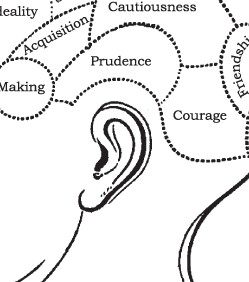May 14, 2013
 “Did you hear what I just said?” my wife asked me as I was busy doing the chores this past weekend. Fessing up, I admitted that I heard her but wasn’t really listening. I think it had something to do with the dripping bathroom faucet.
“Did you hear what I just said?” my wife asked me as I was busy doing the chores this past weekend. Fessing up, I admitted that I heard her but wasn’t really listening. I think it had something to do with the dripping bathroom faucet.
There really is a difference between “listening” and “hearing” as my wife occasionally reminds me. Hearing is passive and requires no effort, while listening, on the other hand, requires focus, attention and concentration. So with that as the backdrop, as a marketer, “Are you merely “hearing” your customers or are you “listening” to them?
In today’s world, we’re all stretched for time and the need to get done everything that needs to be done. But too many marketers are becoming so technology-addicted to their iPhones and email that they forget to listen the old-fashioned way to what their customers are saying and learning what it is that they want. They’re hardly even asking them. Attention spans have compressed to seconds, and face-to-face conversations (where body language plays a big part) are avoided in favor of texting and anonymous Internet surveys. It shouldn’t surprise you then that a Harris survey found that about 25% of all Internet users think it’s okay to be “plugged in” during their honeymoon, and just under 10% think it’s alright to surf the web during religious services. Do you really think that any of these people are taking the time to listen to their customers? Hardly.
So how do you know what your customers want? One of the most common answers I hear is, “Because they told us….” Yet, for me anyway, this answer only calls for more questions. Who? When? What did they tell you? How did they tell you – online? in person? Are you sure you really understood what they were telling you? Have their wants changed?
Think about this: if understanding what your customers want is the foundation of your marketing strategy, listening to customers is going to require more than a one-time investment in classic market research tools like focus groups and customer surveys. (Can I get an Amen on that?)
It’s no big secret that the markets in which you compete are evolving. Customer preferences and wants are continually changing. New competitors are showing up. But the one constant is your customers are talking. The key to truly understanding what they want is continual engagement – through social media, one-on-one interactions, and even sales calls. Getting in front of your customers and engaging them in conversations should be a required part of every marketer’s job – from the CMO down to the marketing specialist. And this applies to both B2B and B2C companies.
Ever wonder what causes customers to flock to one brand while remaining coldly indifferent to another—even when the offerings of the companies in question aren’t substantially different? Well, my experience working with varied sized organizations in all sorts of industries says that the single most important factor that separates the good companies from the great companies is the ability to listen to their customers. Great companies are maniacal about listening and differentiate meaning from the information given. In other words, they’re doing more than hearing what their customers are saying. They’re spending quality time listening. And they’re deriving their direction from what their customers are saying.
On that note, with social media being what it is, here are a couple of things to consider to help bring home the point of how important listening really is: Almost 50% of consumers want businesses to listen to them to improve their products while 60% of consumers want businesses to respond to their complaints. And, 66% of consumers across age groups want companies to respond to online comments on social media platforms.
Here are 5 quick tips on listening to your customers, and please, share this with your staff:
Now that all said, it’s also important to understand that not all customer comments are of equal importance and listening to them without some discrimination can be dangerous. Sure, they provide valuable feedback, advice and criticism, but the stuff some customers tell you can be distracting, unfocused, self-serving and a waste of time. You can’t please everyone and you can’t meet the needs of all your customers. This is when “hearing” them is a better course of action.
At the end of the day, if you don’t care, or can’t convince your customers that you listen, you can bet they will find a competitor who does. Successful businesses walk the walk and listen to the talk,
Posted in Advertising, Blog, Branding, Marketing, Online Marketing, Research, Sales & Marketing, Social Media, Strategic Planning, Strategy | No Comments
Tags: Advertising, Creativity, LA ads, Marketing, Messages, Research, Response, Sales & Marketing, Tactics, Value proposition